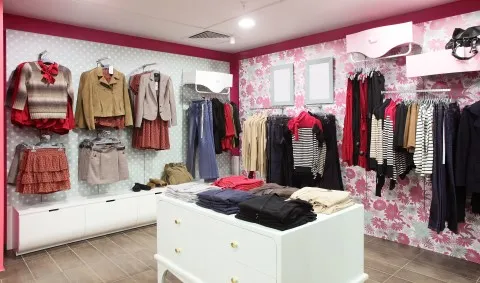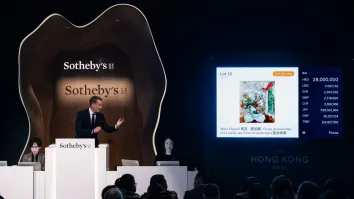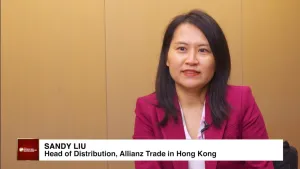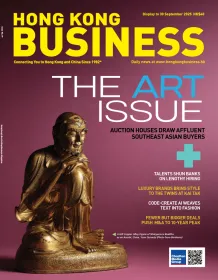
Luxury goods companies coming to grips with new Hong Kong reality
Chinese shoppers are going and shopping elsewhere.
It has been noted that 2015 was a terrible year for the luxury goods sector. The main drag was Hong Kong where sales declined at a double-digit rate because Chinese shoppers diverted their holidays and discretionary spend elsewhere. This question has now been raised: Is this deterioration a temporary problem or indicative of a structural change, and what are the consequences for the luxury goods sector?
According to a release from Schroders, Hong Kong used to be the prime shopping destination for Chinese tourists. With the introduction of the Individual Visit Scheme in July 2003, the number of mainland Chinese residents visiting Hong Kong grew to 44 million in the following 10 years, an astounding increase of over 500%. Hong Kong retail sales soared 184% over the same period, reaching over HKD 162 billion by summer 2014, said Schroders.
Abundant demand and a low cost environment made Hong Kong an ideal location for international retailers, said the report. This was especially true for luxury goods retailers, as these highly priced items meant that the tax and currency differentials resulted in greater absolute savings for the consumer. Although not explicitly disclosed, most luxury goods companies admit that Hong Kong was comfortably their most profitable market.
Today the situation in Hong Kong is very different, noted the report. After a decade of 11% compound annual growth, 2014 marked the first year of a decline in Hong Kong retail sales. So far there are no signs that growth is picking up again, with 2015 Hong Kong retail sales plummeting to an extent last seen during the SARS crisis in 2002.
This is due to the decline in Chinese visitors, which was down 15% year-on-year in November 2015. This marked the sixth month of consecutive declines after a decade of 20% compound annual growth. Bain and Altagamma estimate that the Chinese represent over a third of global luxury sales. In Hong Kong this number is likely to be higher. Hong Kong mall sales to tourists range from 30% to 70% and the Chinese represent close to 80% of total Hong Kong tourists. This implies that the Chinese can represent up to 56% of Hong Kong mall sales.
Here's more from Schroders:
The decline in Chinese visits and retail sales is a consequence of a variety of factors. While the crackdown on corruption has put a dent in overall conspicuous consumption amongst Chinese consumers, the decline in retail sales and visitors to Hong Kong has been far more pronounced than the slowdown in overall Chinese luxury consumption and outbound tourism. For example, in a recent quarterly earnings call LVMH noted that Louis Vuitton sales to Chinese consumers worldwide grew at low double digits in the first half of last year, while total retail sales in Hong Kong declined 2% over the same period. Similarly, total Chinese outbound tourism increased 15% during the first nine months of last year, whereas the number of mainland visitors to Hong Kong did not grow at all. Clearly, the Chinese are still travelling and shopping, just not in Hong Kong. Therefore there must be other, Hong Kong specific factors at play.
Firstly, mounting cultural tension has likely had an impact. While the influx of mainland Chinese tourists benefited the Hong Kong economy, concerns have been building over the impact on the local community. A handful of violent incidents have received a lot of press coverage, and consequently a perception of hostility has emerged amongst the Chinese and many no longer feel welcome in Hong Kong.
Secondly, shopping in Hong Kong is no longer cheap for mainland Chinese tourists. As the Hong Kong dollar became slightly stronger while the euro became significantly weaker, price differentials between Hong Kong and Europe increased substantially. A purchase made with Chinese renminbi in Hong Kong was now much more expensive than buying the same goods in Europe, with price differentials as high as 200% in certain instances. Additionally, as more and more people went online these pricing differentials became highly visible to consumers. Online international purchases in China are exempt from paying import tax, which for luxury goods can be as much as 20%.
Finally, the Chinese consumer has evolved. They have become more sophisticated and their priority is shifting towards experiences and services. Cities like Paris, Rome and Tokyo are rife with cultural experiences and ancient history, while Hong Kong is still primarily seen as a shopping destination. With prices up to 200% higher than in continental Europe and other parts of Asia, shopping in Hong Kong is no longer a draw.
All in all, with easy access to other destinations where prices are lower, the range of experiences is greater and there is no perceived cultural tension, the Chinese are not left with many reasons to visit Hong Kong. After all, why go to Hong Kong to buy a handbag when you can go to Paris and get the same bag for half the price, and visit the Louvre and take a selfie in front of the Eiffel tower at the same time?
The luxury goods companies are left in a difficult situation as they have invested heavily in sizeable and expensive retail networks in Hong Kong. Most companies have seen their profit margins weaken significantly as footfall in their Hong Kong stores is down by double digits.
Luxury goods companies are facing up to the new reality in Hong Kong and the risk of earnings disappointments continues. But for the time being, it seems that the Chinese are likely to continue to travel and spend their money elsewhere, so all is not lost. This will inevitably require some re-jigging in terms of company structure and strategy. Management execution will be crucial in tackling the imbalances in global pricing structures and downsizing store networks might be necessary in adjusting to a structural decline in the Hong Kong consumer base. It is becoming increasingly apparent that the sector will have to be more agile in the future, in responding to fluctuating currencies, subsequent changes in travel patterns and rising online penetration.
The relative winners during this transition will be those companies that can be flexible in their inventory management and have the ability to predict the location of consumer demand and shift their products accordingly. A digital offer and omni-channel strategy will also become even more important in order to capture the growing online demand from ever more sophisticated consumers. When facing an uncertain future, investment opportunities will arise. We believe that identifying those companies that are prepared to tackle pricing imbalances, have the flexibility to respond to changes in the location of end demand and have a superior digital offering to capture online demand will deliver the greatest investment returns.



















 Advertise
Advertise





